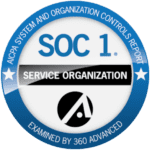Navigating the complexities of logistics can be as tricky as steering a mega-sized container ship through a narrow canal.
Among these intricacies lies the critical process of freight claims management—a realm that often brings shivers to logisticians and shippers alike. Understanding the stakes involved in freight claims management is crucial for maintaining smooth logistics operations, financial integrity, and customer satisfaction.
In this comprehensive guide, we’ll explore the key aspects of freight claims, including what they are, why they’re essential, and expert tips for handling them effectively. By the end of this post, you’ll have a firmer grip on the reins of this vital facet of logistics.
What Are Freight Claims?
In the world of logistics, a freight claim is a legal demand by a consignee or shipper to a carrier for financial reimbursement due to the loss or damage of goods during transport. It’s an unfortunate but all-too-common scenario that tests the resilience and agility of supply chain management.
To place a successful claim, shippers must understand the types of claims and the regulations governing them. In essence, freight claims are governed by the Carmack Amendment in the U.S., detailing the liability of carriers under specific circumstances.
Types of Freight Claims
Freight claims fall into several categories, each with its own set of requirements and intricacies:
-
Damage Claims: These are filed when goods arrive with visible damage or impairments that render them unsellable or necessitate repair. This can include anything from broken parts to cosmetic flaws that affect the product’s marketability. Ensuring thorough inspection upon arrival is crucial for timely filing.
-
Loss Claims: If a consignment never reaches its recipient, a loss claim comes into play. This type of claim addresses the complete disappearance of goods during transit and often requires an investigation into the whereabouts of the shipment.
-
Shortage Claims: These occur when fewer items are delivered than were shipped or stated on the bill of lading. This discrepancy can stem from errors in loading, theft, or even administrative mistakes. Accurate documentation and inventory checks are essential for substantiating such claims.
-
Concealed Damage or Shortage Claims: Sometimes, the damage or lack of items isn’t noticed until after delivery — a situation that requires prompt action and precise documentation. These claims can be particularly challenging as they necessitate proving that the damage or shortage occurred during transit and not after delivery. Prompt reporting and photographic evidence can be critical in these cases.
Importance of Timely and Effective Freight Claims Management
Effective freight claims management is not merely about financial recuperation; it’s about preserving business relationships, protecting reputations, and optimizing logistics operations. Timely and proper handling of freight claims can also lead to:
-
Increased operational efficiency: By thoroughly analyzing claims data, companies can identify recurring trends in losses and damages. This insight allows them to implement targeted strategies to mitigate these issues, streamline operations, and enhance overall efficiency.
-
Improved customer satisfaction: When issues are resolved promptly and transparently, customers’ trust in a company’s supply chain reliability significantly increases. Clear communication and swift action not only address immediate concerns but also build long-term loyalty and satisfaction.
-
Reduced financial losses: A well-managed claims process is crucial for financial health. By efficiently handling claims, companies can recover funds that would otherwise be lost, minimize financial impact, and ensure resources are allocated more effectively.
Best Practices for Managing Freight Claims
-
Document Everything: From the moment goods are shipped to when they’re received, documentation should be meticulous. Take clear, time stamped photos, keep detailed condition reports, and maintain comprehensive item inventories. These records are critical for substantiating claims and tracking the journey of goods.
-
Understand the Fine Print: Familiarize yourself thoroughly with carrier policies, liability limits, and industry regulations. This includes understanding the nuances of coverage, exclusions, and procedures for filing claims. Knowledge is power, especially when negotiations are involved, and it can save time and resources in the long run.
-
Train Your Team: Ensure that all staff members, from warehouse personnel to customer service representatives, know how to handle damaged shipments and the necessary steps to file a claim. This includes recognizing damage, documenting it properly, and following up in a timely manner. A well-trained team can prevent minor issues from escalating into major problems.
-
Invest in Technology: Transportation Management Systems (TMS) come equipped with tools to help automate and streamline the claims process. These systems can track shipments in real time, generate reports, and manage the documentation required for claims. Investing in technology can significantly improve efficiency and accuracy in handling claims.
-
Maintain Good Carrier Relationships: Building and maintaining open communication and mutual respect with carriers can lead to better cooperation when resolving claims. Regularly reviewing performance, addressing issues promptly, and fostering a collaborative approach can result in more favorable outcomes and a smoother claims process.
Conclusion
The facts of freight claims management are that, while sometimes complex and frustrating, it’s an essential component of the logistics and transportation industry. By approaching it with diligence, insight, and readiness, shippers and logistics providers can turn potential disasters into par-for-course procedures.
While we can’t eliminate the risk of product losses or damage entirely, understanding the ins and outs of freight claims ensures that when these challenges arise, they’re dealt with efficiently and effectively.
Remember, the goal is not just getting compensation—it’s about continuously improving logistics processes to mitigate future incidents and fostering a customer-centric culture that’s resilient in the face of adversity.
With a robust approach to freight claims management, your supply chain becomes not only stronger but smarter, driving your business forward on the highway of success.
Looking to Optimize Your Freight Claim Management?
Contact Hatfield & Associates LLC today. Our team of experts is dedicated to helping you streamline your operations, minimize losses, and enhance customer satisfaction through cutting-edge logistics solutions.
With our comprehensive approach, we guide you every step of the way, from understanding your rights and responsibilities to implementing technology that drives efficiency.



